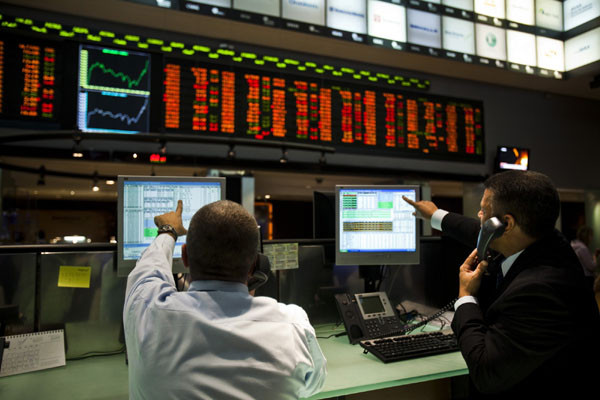Cotton futures had a tricky 2019.
Overshadowed by the trade dispute between the US (the world’s top cotton exporter) and China (a major exporter), prices underperformed for most of the year, standing 17% lower for 2019 as of the end of September.
However, futures pared those losses to 4,4%, on a spot contract basis, at the close of the year as hopes for a phase one China-US trade deal revived.
Furthermore, expectations for the US cotton harvest have declined, from 22.52m bales in August, as estimated by the US Department of Agriculture, to 20.21m bales as of December.
Will these dynamics be enough to keep the price recovery going into 2020?
Commerzbank
The scope for any further price recovery from this side is now limited, especially as the additional upside potential is also likely to be limited in view of the rising stocks outside China.
The 2020-21 season is now already being discussed - in preparing its new 10-year long-term forecast, the USDA is assuming that this season will see the US cotton acreage decrease by 12.8% given that the price is still well below the level at which planting decisions were taken this year and sowing was finished by the end of June.
As far as global demand is concerned, the International Cotton Advisory Committee is sceptical, mainly because of the downward corrections of the growth expectations for Asia.
We envisage a cotton price of 72 US cents per pound by the end of 2020.
FocusEconomics
Moving to 2020, prices will likely increase slightly from current levels due to healthy demand in China.
That said, subdued global growth, partly due to trade protectionism, and ample U.S. supply pose downside risks to prices.
Our panellists project prices to average 70.1 cents per pound in the fourth quarter of 2020 and 70.0 cents per pound in the fourth quarter of 2021.
Goldman Sachs
While global cotton stocks are projected up year on year (plus 3m bales to 83.7m), this has been driven by demand disappointments outstripping lower supply.
With our economists projecting a cyclical uptick in 2020, we expect a rebound in demand and higher cotton prices.
Ron Lee, McCleskey Cotton
Looking to 2020, the December futures contract is very impressively pushing toward 71.00 cents a pound.
Even so, all articles and estimates seem to imply that US cotton acreage will decrease in 2020. I agree with that, as I don’t have to tell you that 71.00 cents a pound isn’t what 71.00 cents a pound used to be.
While cotton could certainly tag along, if the Chinese follow through with their agreement to aggressively increase their purchases of US farm products, they will look to feed their people first.
Therefore, we would expect corn and soybean prices to lead the way if that demand does in fact surface.
Ever since we first started filing this report almost 15 years ago, we have said that corn is the commodity that drives the train for agricultural commodities.
A rising corn price lifts all other proverbial boats. So I am optimistic about row crop prices in 2020, cautiously optimistic, but optimistic nonetheless.
JP Morgan
From the current multi year lows, we continue to see ICE #2 cotton price risk skewed to the upside, as stocks-to-use on a world basis and in China remains in a long-term declining trend, at 47% and 83% respectively in 2019-20.
On a shorter-term basis however, sluggish global growth and a continued contraction in the manufacturing sector present headwinds for cotton demand.
The primary upside risk factors for ICE #2 cotton prices stem from an improvement in US-China trade relations, and specifically the prospect of a Phase One trade deal being signed.
The potential deal is anticipated to have significant implications for US cotton exports to China, at least doubling pre-trade war volumes over the lifetime of the deal.
However, the more immediate price impact would be felt via an improvement in macro sentiment and growth potential, which would transpire into heightened investor risk appetite.
We have… lifted the 2020 [price] forecast strip by 1 cent a pound to 65 cents a pound in the fourth quarter of 2020, mostly to account for recent production losses in the US and Australia.
Plexus Cotton
The market seems to have more bullish arguments at the moment and keeps pushing higher.
After flip-flopping for several weeks, speculators seem to be finally transitioning back to a net long position, after the long-term downtrend on the weekly chart has been broken and March has moved above all of its moving averages up to the 200- day.
However, upside potential seems to be limited from a supply/demand point of view, since there is no shortage of cotton.
But… speculators certainly have the power to move cotton futures beyond their perceived ‘fair value’ and we therefore can’t rule out a move into the low 70s [cents a pound] over the coming weeks.
Rabobank
ICE #2 cotton is forecast to trade higher in late 2020, after touching three-year lows in late 2019.
Rabobank anticipates prices to reach 67 cents a pound by the second quarter of 2020, rising to 72 cents a pound by the fourth quarter of 2020.
The near-term availability of 2019-20 US stocks – forecast to reach 7.8m bales this season – is expected to cap ICE #2 upside through the first half of 2020.
With US grower margins under pressure, Rabobank anticipates US 2020-21 area to fall 0.7m acres YOY, to 12.8m acres – driving US production just below 20m bales. With an estimated 16.5m bales of US exports next season, ending stocks will rise just 2% year on year. This assumes improved US-China cotton trade flows in the second half of 2020.
Chinese imports are set to improve both this season and next, despite an expected GDP growth slowdown, reaching 12m bales (+15% year on year) in 2020-21.
Chinese import demand will drive ICE #2 strength through the second half of 2020.


